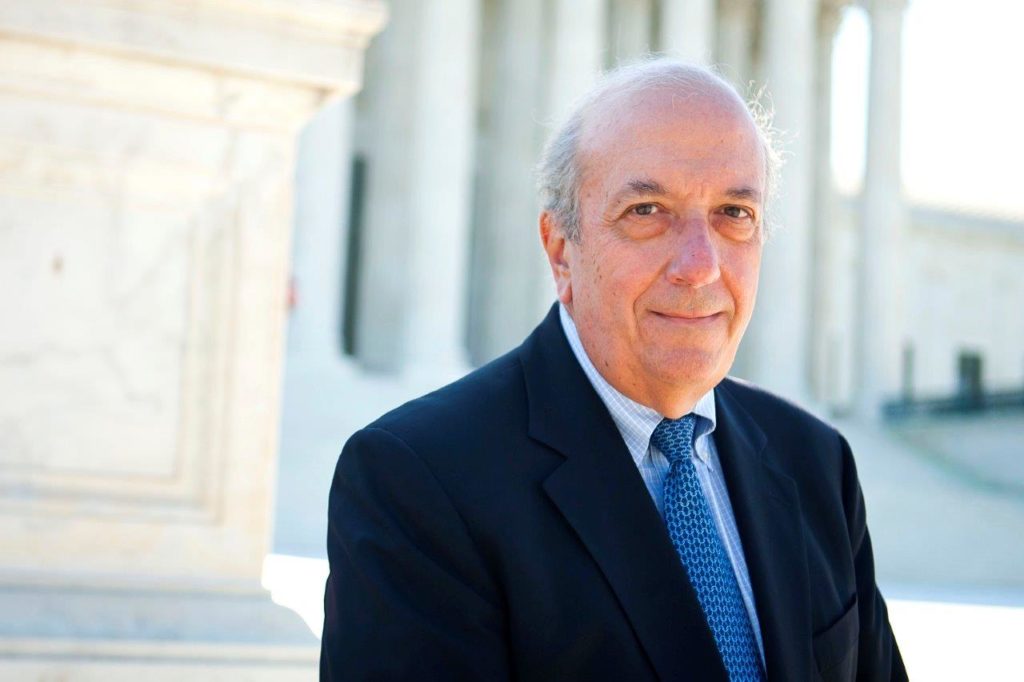
Lawyers prepare for U.S. Supreme Court arguments with research, more research and numerous moot court go-rounds. And they study the justices themselves, looking for clues to succeed. Which ones are more likely to interrupt their arguments and in what ways? Which ones have habits, histories or inclinations that might inform an effort to persuade them?
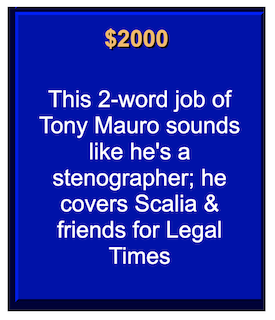
For decades, plenty of those nuggets have come from Tony Mauro, a journalist who became a clue himself on the TV show “Jeopardy” in April 2009. (A long-time reporter for USA Today and then the National Law Journal and the rest of ALM Media, Mauro is semi-retired and joined Texas Lawbook in 2020 as a regular contributor.)
The Jeopardy-ized answer (“phrased in the form of a question”): What is a court reporter? In reality, that is the barest minimum description for someone who has become a big name in legal affairs journalism without even trying to be. A lot of reporters have covered the court; and then there’s Mauro, the pathbreaker.
“Tony changed the nature of Supreme Court coverage, which traditionally has been focused on the public actions of the court,” says Adam Liptak, who began covering the court for The New York Times in 2008. “He broadened the lens to look at the culture of the court, the advocates, clerks, the justices in public appearances, their [clerk] hiring patterns and their commitment, or not, to transparency. I view him as an important and seminal figure in modern Supreme Court reporting.”
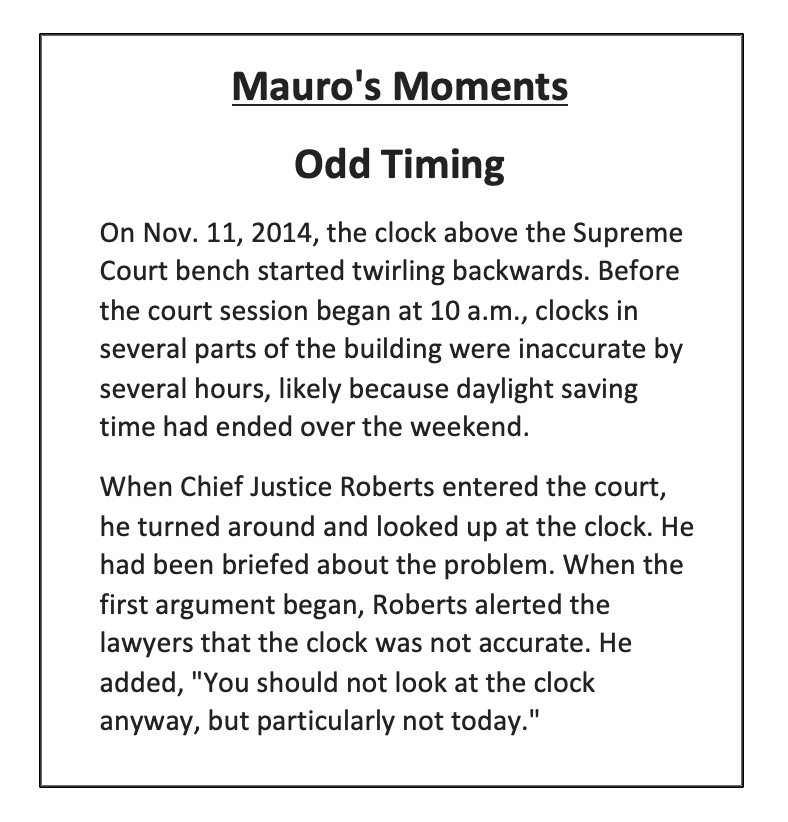
Mauro realized early on that almost any tidbit having to do with the Supreme Court — no matter how subtle — is worth a story.
“Appetite for information about the Supreme Court is so huge,” says Liptak, “there almost is no such thing as a small story. Tony has an excellent eye for minor or telling developments or historical incidents that illuminate contemporary practice.”
Upon meeting Mauro, Liptak told him, “I want to write stories like you do.”
Mauro, whose soft-spoken humility and self-deprecation strike those who know him as instinctive, says simply: “He surpassed me very fast.”
While others might clamor for recognition, Mauro has chugged along like a battle tank, doing story after story for decades, with awards and accolades trailing behind him like confetti at a parade. An award was even named for him when he retired from the National Law Journal in 2019: the annual Tony Mauro Media Lawyer Award, honoring attorneys advocating for freedom of the press, launched by The American Lawyer and ALM Media, which includes the NLJ.
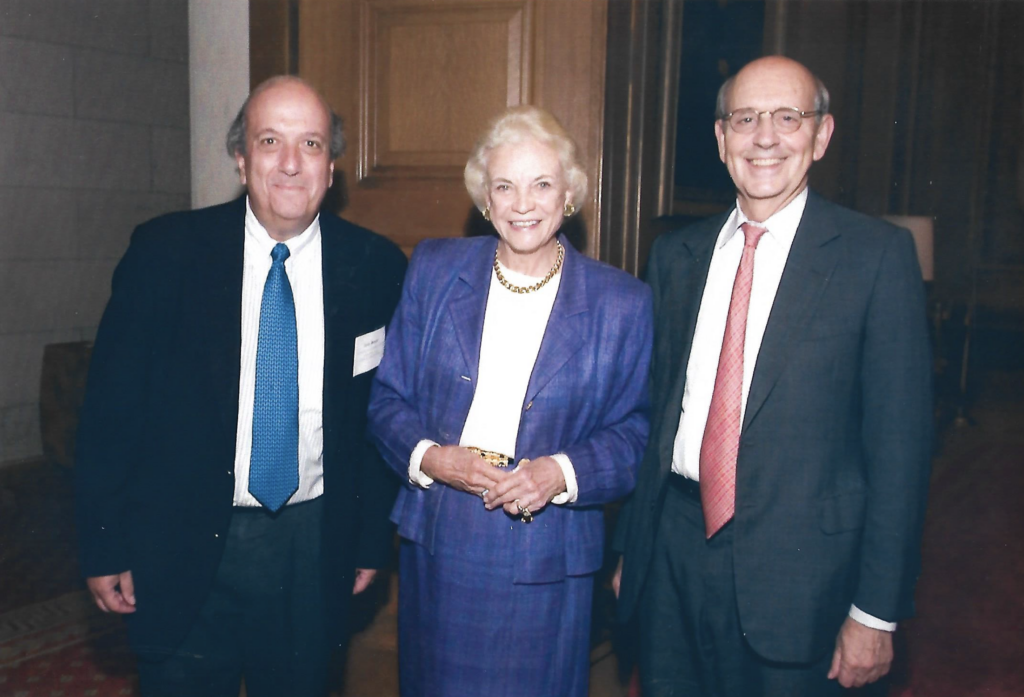
From left: Tony Mauro, Justice Sandra Day O’Connor, Justice Stephen Breyer
Incidentally, Texas quickly had purchase on the prize. That first year, one of the two awards went to Laura Prather, a Haynes and Boone partner in Austin. And last year one went to Tom Leatherbury, a Vinson & Elkins partner in Dallas.
The honor’s aim could not be more fitting. Mauro’s First Amendment work and his related efforts for transparency in government are legendary. Beginning in 1984 he has been active in leadership of the Reporters Committee for Freedom of the Press, where he was tapped immediately for the steering committee and remained on it until retiring in 2019. He served numerous terms as chair of the executive committee. In 2011 Mauro was inducted into the RCFP’s Freedom of Information Act Hall of Fame and remains on the group’s Honorary Leadership Council.
Mauro is famous within the RCFP family for conducting tours of the Supreme Court for small groups of young legal fellows and journalists interning at the organization. They visited not just the courtroom itself, but also other areas in the awe-inspiring building.
They attended hearings, particularly ones that touched on the First Amendment when possible. Back when seating policies were less strict, “I got them pretty good seats,” Mauro says. “Just behind the press corps.”
“It was really exciting,” says Sonja R. West, who went on a Tony Tour in 1995. She holds the Otis Brumby Distinguished Professorship in First Amendment Law at the University of Georgia School of Law, in conjunction with the university’s journalism school. “We got in the press box, so we had really good seats. And we had lunch in the Supreme Court cafeteria. I couldn’t have been more thrilled. The Reporters Committee has an amazing group of people doing incredible work, but only one person would take the bulk of a day and spend time with young people and share stories, and his wisdom.”
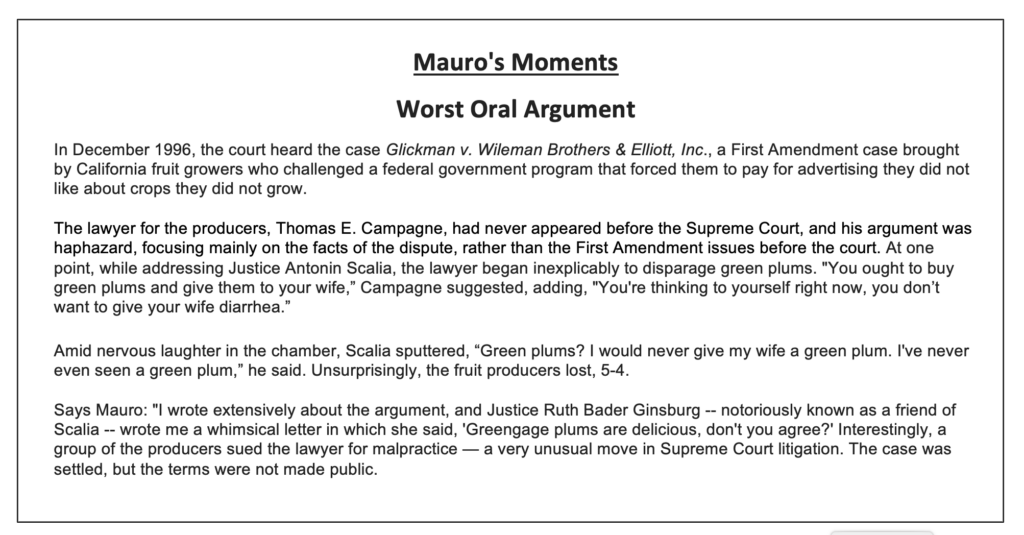
As a journalism undergraduate, West knew she wanted to go into First Amendment law and worked as a newspaper reporter for a couple years before entering law school. In between she spent the semester as a journalism intern at the RCFP.
West would return to the court’s cafeteria four years later, as a law clerk for then-Justice John Paul Stevens.
“When I got to be behind the scenes at the Supreme Court and read press coverage of the court’s work from an insider’s perspective, including Tony’s work, it really opened my eyes to all the different layers of how reporters can cover the institution. What struck me always about Tony was how much he really brought home the humanity of it, meaning it’s an institution of humans, with our flaws and all our good traits that make the institution run.”
While much of the reporting concerned arguments and opinions, “it was really Tony who made these huge inroads into serious coverage of the people who are behind that velvet curtain.”
Another who took the Tony Tour, in January 1987, was Lucy Dalglish, who had already worked for 13 years as a newspaper reporter and at the time was in Yale Law School’s one-year program for journalists writing about the law.
She and Mauro got to know each other over a number of years when she worked as a media lawyer in a prominent firm, and when she was chair of the Society of Professional Journalists’ Freedom of Information committee.
Mauro encouraged Dalglish to go for the job when the RCFP, with him on the steering committee, was looking for a new executive director. She took the job in 2000.
He soon became encouraging in other ways. Within a year Dalglish was diagnosed with breast cancer. Mauro, who had dealt with cancer and endured chemotherapy in the mid-1980s, reached out to her immediately.
And the day she returned home from surgery, he made a 40-minute drive and appeared at her door that evening, on a work day, with a salad and a big pasta dish — a penne pasta with alfredo sauce that he’d made —for her and her visiting parents. They feasted for days.
“Tony is unbelievably dependable, soft-spoken and doesn’t pull punches when it comes to being a reporter — but he’s one of the kindest people on the planet,” says Dalglish, now dean of the University of Maryland, College Park’s Philip Merrill College of Journalism.
The other side of Mauro’s First Amendment coin is transparency. Among other efforts, he has long pushed for cameras in the courtroom, which thus far has been unavailing. Live audio-feeds during the Covid-19 pandemic, which ceased when the court finally re-opened, were tantalizing.
After Justice Scalia died suddenly in 2016, news reports offered details about his previously undisclosed health problems, such as high blood pressure, diabetes, chronic obstructive pulmonary disease and more. Mauro wrote to each justice, asking them to publicly release information on their own health, as is done with presidents.
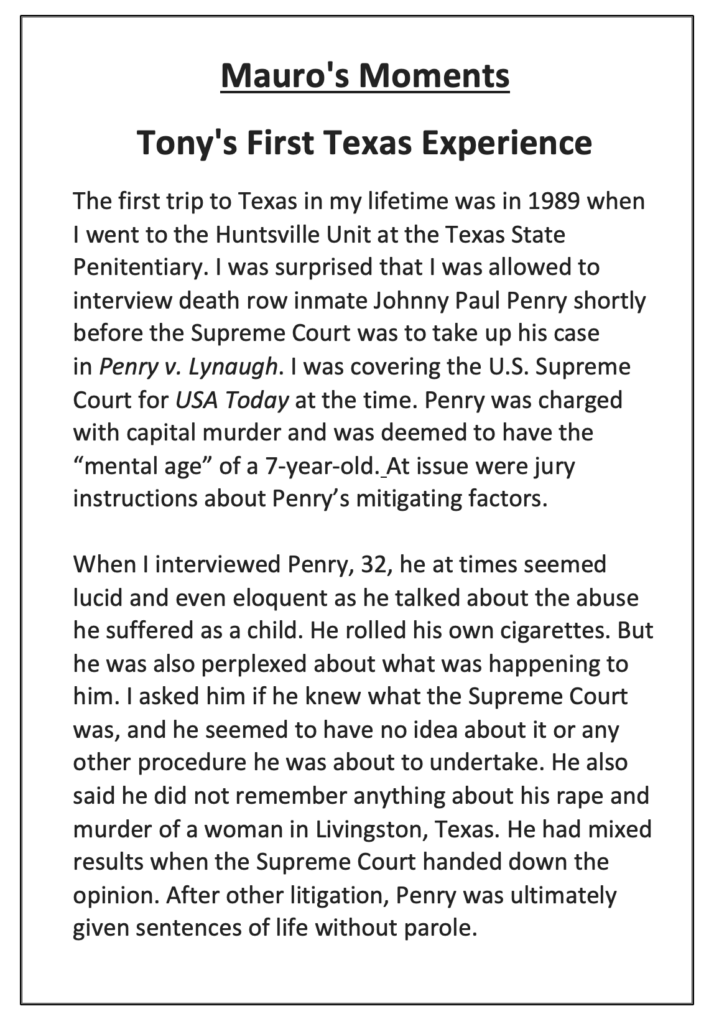
He received a single, terse response from Chief Justice John Roberts thanking him for the inquiry and noting that the court’s public information office will provide health information “when the need to inform the public arises.”
That, Mauro wrote at the time in the NLJ, “was a classic response from a government institution that often lags behind others on issues of transparency.” And in a USA Today op-ed he wrote about the need for justices to release their official papers, as Justice Thurgood Marshall had done upon his death. Scalia was the longest serving member on the court when he died, and “three decades of Supreme Court history might have gone with him.”
“In an era when the public demands maximum transparency and accountability,” Mauro said in conclusion, “the time has arrived for Congress to keep justices from shielding — or torching — documents the public deserves to see.”
As part of his relentless approach to bringing transparency to the least accountable branch of government, which at times seems Kremlin-esque, Mauro was way ahead of the game in writing regularly about the justices themselves, as well as others working in D.C.’s “Marble Palace” — the name of Mauro’s ongoing blog at the National Law Journal. That includes their personal lives when pertinent. His work occasionally has raised hackles, including among those in the black robes and some in the Supreme Court press corps.
There was the time in 2000, for example, when Mauro wrote about potential legislation that congressional staffers were calling the “Keep Scalia on the Court Bill.” An anonymous source on Capitol Hill told Mauro that, “Scalila’s the only one who talks about” wanting a legislative end to a prohibition on judges accepting honoraria, such as money paid for speeches.
Scalia disputed that assertion in an angry letter to Mauro, and the Legal Times promptly asked the justice’s permission to publish it as a letter to the editor. Thus, Scalia publicly delivered himself of this opinion: The article was “gossipy, titillating (and characteristically Mauronic) copy, but in fact the honorarium ban makes no difference to me.”
Scalia wrote that he’d discussed the ban just twice, only when asked about it, and that he’d said “… I thought it was a good idea.”
Mauro’s final elocution: “I didn’t back off on what we had written that made him so mad at me.”
They’d had a good start, though. Soon after Scalia joined the court in 1986, Mauro wrote the justice a note about a personal connection: His father had once taken an Italian literature course taught by Scalia’s father at Brooklyn College. Scalia replied, inviting the reporter for lunch at his favorite place in D.C., the now-defunct A.V. Ristorante. Conviviality flowed like wine.
Four years after the “Mauronic” dart, Scalia in 2004 sent another letter to Mauro, this time thanking him for soliciting the justice’s son, Matthew Scalia, to write an essay for Legal Times about his time as an Army officer in the Iraq War. Mauro’s gesture managed to “make amends for past harshness,” Scalia wrote, saying it warranted another pizza. Logistics and inertia kept that from happening.
There was further balancing of the relationship in 2008, when legal-writing guru Brian Garner and Scalia were promoting their book on the subject of textualism at the Kennedy Center in D.C. Scalia balked when his co-author suggested they invite Mauro, who was covering the event, to join them backstage. Garner persuaded the justice by telling him the best way to a good relationship with a journalist is to show interest in them and “be your charming self.” Scalia obliged, asking Mauro about his Italian family. (Mauro profiled Garner for The Texas Lawbook in June 2020).
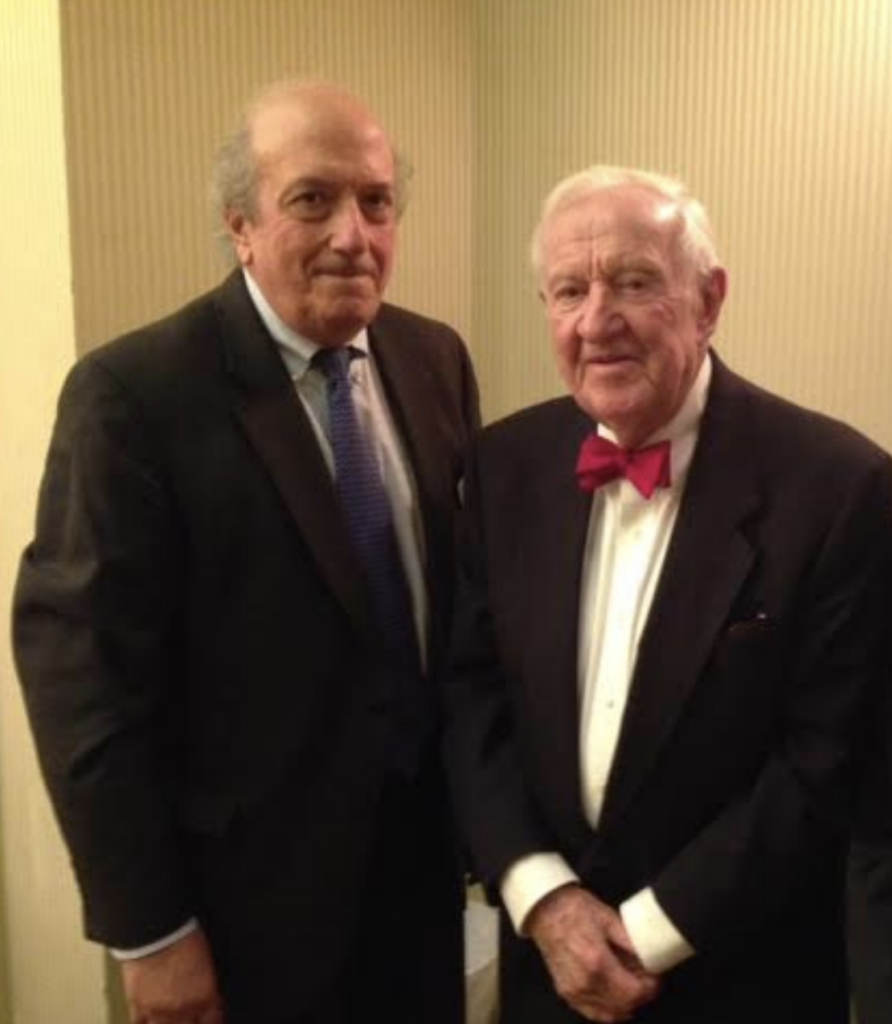
Mauro (at left) with Justice John Paul Stevens
While Scalia could carry a grudge and was armed with a sharp tongue, “He was also sort of a courtly Italian gentleman,” Mauro says. They had a nice chat. “We can act friendly sometimes, but we’re not supposed to be friends.”
When USA Today was launched in 1982, Mauro was among the first reporters recruited to its staff. And for a time, the fledgling Gannett product was the laughing stock of newspapering. Bright color photos (unusual then for newspapers), charts and other graphics were ubiquitous and often supersized. Boxes for street sales were designed to look like TV sets or early PC monitors. Little did critics know that in short order they would be overwhelmed by the stylisms introduced by USA Today’s flamboyant founder Al Neuharth.
The stories themselves were little more than bulletins, at only 400 words or so. And another quirk had critics howling: the use of “USA” in stories and headlines instead of “U.S”, “nation” or “country.” The gentle but firm Mauro called foul when a story of his was edited to say: “the USA Supreme Court.”
“I pushed back on that one, and I won,” he says. As for brevity in stories, he didn’t like the constraint but admits it probably helped develop more clarity and directness in his writing. “It’s like that Mark Twain note to someone: ‘If I had more time, I would have written a shorter letter.’” Over the millennia other writers and thinkers have said a version of that.
Reminded in an interview of the wrinkle concerning the high court’s proper name, Bob Dubill, the former executive editor of USA Today, laughs. His laughter is long and hard enough to suffice as the totality of his response.
“Tony is just remarkable,” says Dubill, who had been Mauro’s boss at the Courier-Post in Cherry Hill, N.J., in the mid-1970s. Dubill left for Washington in 1978 to run the Gannett News Service and brought Mauro there the following year to cover the Supreme Court.
“If you can cover the New Jersey Supreme Court, you can cover this one,” Dubill told him.
“Any time I edited a story by him he wouldn’t give up the copy, going back and polishing to make sure every word was the right one,” Dubill recalls. “And he’s one of the most remarkable people I’ve ever met. He is a gentle man.”
Dubill held several top jobs at USA Today and was executive editor from 1995 until his retirement in 2002. The newspaper eventually went deep with its journalism during his tenure. After about 10 years Gannett poured a lot of money into beefing up its staff and bringing more depth with longer stories and, in turn, gaining more readers and advertisers. After having been derided as “McPaper,” USA Today eventually won respect within the news business. Mauro did some of the spadework in building a newspaper that at one point eclipsed all others in circulation.
One example: In 1998, Mauro conducted a demographic study of the Supreme Court’s law clerks, whose power and influence — in choosing which cases the court would take and how they would be decided — had increased over the years. He found, among other things, that fewer than 1.8 percent of the clerks hired over the years by the justices on the court at that time were Black, 1 percent were Hispanic and 4.5 percent were Asian. Only one in four were women.
Four of the nine justices had never hired a Black law clerk, and there were none at the court that year. The court itself was more diverse, with a woman and two Black men.
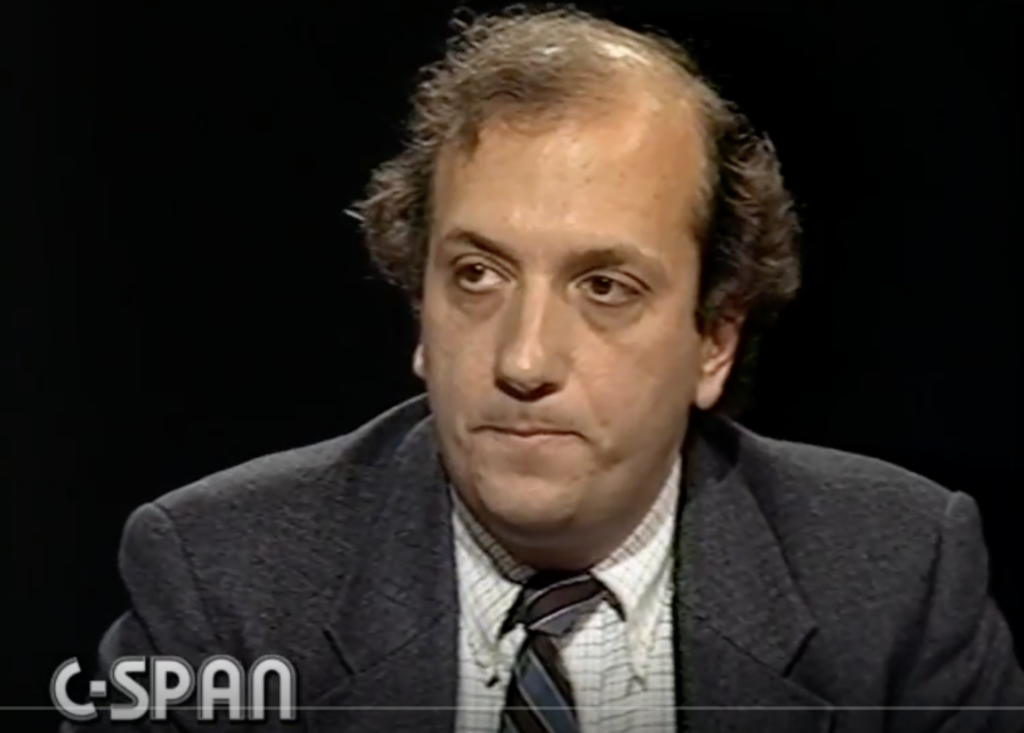
Mauro has made more than 100 appearances on C-SPAN
The story got traction, like battle-tank tracks on a parade field.
Just months later, justices Clarence Thomas and David Souter were grilled on these issues in a congressional budget hearing. Both pointed to the problematic narrowness of the pipeline coming from so-called “feeder judges,” the federal appellate and district judges whose clerks are considered for Supreme Court for clerkships. Those judges weren’t hiring a lot of minority clerks, so pickings were scarce. (Thomas would be back in the hot seat 11 years later, delivering the same response.)
Mauro’s project also prompted complaints and protests from leaders of the NAACP, the National Bar Association, the head of the National Organization for Women, and groups representing Hispanic, Asian-American and Black lawyers.
Then-Chief Justice William Rehnquist declined a request to meet with them.
“Tony’s fearless,” says Liptak. “He’s written about things the justices were not eager to have him write about.”
Dahlia Lithwick, who started covering the court for the online Slate magazine in 1999 and soon became a superstar in legal affairs journalism, brought an irreverent, probing and barbed approach to coverage that immediately endeared her to Mauro. Some in the court press corps had side-eyed views of her. But Mauro was a mentor, she says.
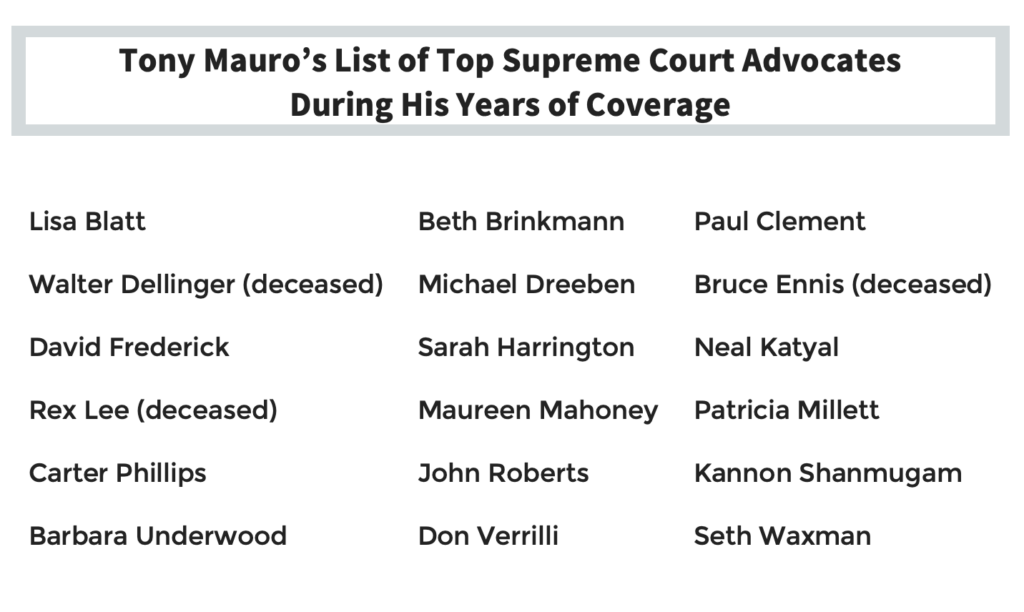
“There was a long-standing tradition, until Tony came long, to cover the Supreme Court as though the law was alive and the justices were dead,” Lithwick says. “People would come out of argument and say, ‘Oh, this is what happened to affirmative action today,’ or ‘This is what happened to abortion today.’ Tony was in the vanguard saying that who the justices are and how the institution works is as material as what law was made.
“For a very long time, even when he did the work on the demographics of law clerks, a lot of folks in the press room thought it was not appropriate, not something that should be discussed, and had no relevance to the work of the court. He was prophetic, so ahead of his time in some sense. A lot of the Supreme Court journalism today does kind of organically what Tony was really pushing hard to do, often by himself, in the 90s.”
Mauro left USA Today in 2000 to write for the Washington D.C.-based Legal Times, a weekly newspaper. There were no hard feelings. He was just looking for a change. For years while at USA Today he had written a weekly column for Legal Times called “Courtside,” and when he joined Legal Times he continued writing occasionally for USA Today as an op-ed contributor.
“Legal Times was a feisty paper,” Mauro says. “It was kind of a local newspaper for lawyers in Washington, and I liked that. I’d walk down the street and run into lawyers who’d seen my stories. Didn’t have that at USA Today. That was a big part of it.”
The legal newspaper had solid foundation for that feistiness. His stories sometimes were edited by Jill Abramson, who went on to become executive editor of The New York Times. Colleague Terry Moran is now senior national correspondent for ABC News. The LT was a stepping stone for a number of other names that would become familiar on bigger stages.
In a 2017 National Law Journal series of stories examining the impact and professional pathways of Supreme Court law clerks, Mauro revisited diversity in their hiring. He wrote that since Chief Justice Roberts joined the court in 2005 there had been “near-glacial progress” from his findings of 1998 at USA Today. This time he showed that 85 percent of law clerks at the court from 2005-2017 were white, and of 487 law clerks during that span only 20 were Black and nine were Hispanic. There were twice as many men as women, though by then more than half of all law students were female.
Other reporters and publications began keeping tabs on such concerns.
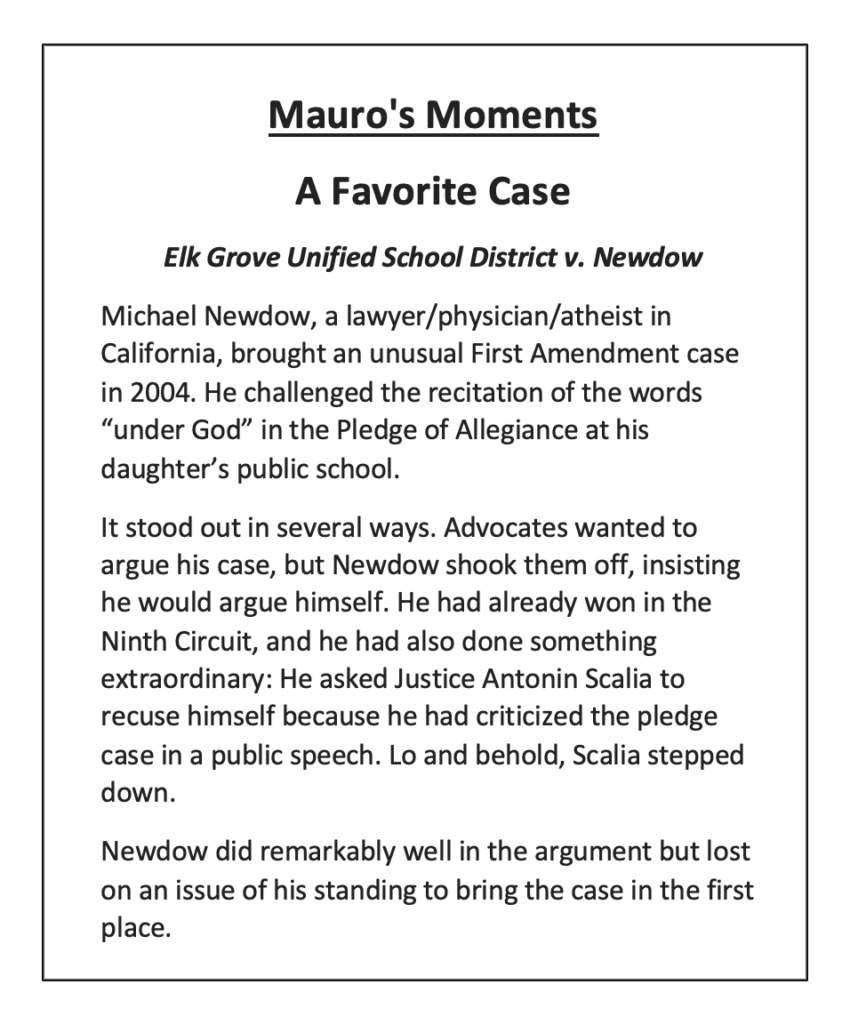
Mauro’s written work and feel for the pulse and history of the court led to his being commissioned by C- SPAN to write a book to go with its series on “Landmark Cases: Historic Supreme Court Decisions” aired in 2015, looking at 12 key cases. He did another book for a second season in 2018 with 12 more cases. The books drew from an earlier one by Mauro, Illustrated Great Decisions of the Supreme Court.
He has appeared on C-SPAN more than 100 times, which garnered a canvas C- SPAN tote bag.
Going against conventional wisdom is another of Mauro’s writing strengths. Perhaps the best example is his lengthy, detailed look at Clarence Thomas on the 10th anniversary of his arrival on the court. It was The American Lawyer magazine’s cover story for August 2001.
When he was nominated for the Supreme Court in 1991, Thomas’ confirmation hearings in the Senate were jaggedly rough, almost upended by late-coming allegations of sexual harassment made by his former employee, Anita Hill. He had been her supervisor at the Department of Education, where he was assistant secretary over its Office of Civil Rights, and then again when he chaired the Equal Opportunity Employment Commission. The hearings became arguably nastier than any before or after.
Thomas complained to the Senate Committee on the Judiciary that it was engaged “in a high-tech lynching.”
Thomas went on the bench at age 43 with stigma. His response was to ignore criticism. And, for whatever reasons, he famously went years without offering questions during oral argument.
The gregarious and socially engaging Thomas became reclusive and bitter. Two years after going on the bench, a New York Times story had revealing details from a discussion the justice had with two of his law clerks. He told them he would remain on the Court until the year 2034. One asked why.
“The liberals made my life miserable for 43 years, and I’m going to make their lives miserable for another 43 years,” he replied.
Mauro’s 2001 counter-take, at more than 5,600 words and titled “The Education of Clarence Thomas,” humanized the justice, who had adopted his 6-year-old grandnephew in 1997 to get him away from a troubled home. Thomas had been similarly pulled from jeopardy by his own grandfather.

Mauro with family: (From left) granddaughter Hannah, age 3; Kathy Cullinan, his wife of 25 years; daughter Emma; granddaughter Madeline, less than a year. The photo was taken by Mauro’s son-in-law, Brian.
Thomas focused much of his life outside the Marble Palace on his grandnephew. Mauro wrote: “While most of his fellow justices accumulate grandchildren and ponder retirement, Thomas, 53, has become the equivalent of a father again. And it has transformed him.”
Mauro detailed how, despite widespread thinking otherwise, Thomas has held solidly to his jurisprudential philosophy and had gained some scholarly respect.
Mauro wrote: “It is Thomas’ unconventional, unblinking brand of originalism that has quieted the doubts of academics who once might have thought that Thomas’ colleagues — or his clerks — were manipulating him.”
The Thomas story is the first that comes to mind for Aric Press who was, at the time, editor-in-chief of The American Lawyer.
“Tony essentially argued that questions about Thomas’ silence on the bench, being often in dissent and not regarded as a significant player were off, saying ‘Wait a minute, Thomas is having far more influence than people realize’, both through his writings and influencing like-minded, right-wing scholars, and through his clerks spreading out into academic and political life,” Press says. “I think he was the first one to call that in a national, popular publication. Now it’s conventional wisdom, for good or bad.”
While Mauro has gotten plenty of scoops over the years, he can be generous in situations where other journalists might hide the ball.
On Feb. 29, 2016, The New York Times’ Liptak had a busy day with a problematic schedule. There were two hearings that afternoon in the Supreme Court, and he skipped the first one because the case wasn’t of much general interest.
Mauro leaned over and said, “Clarence Thomas just asked a question.”
“That’s the kind of thing you might joke about,” says Liptak, who knew that Thomas had not asked a question for 10 years. “I thought he was pulling my leg, and he said, ‘No, really.’”
Liptak was able to get the transcript quickly after the hearing and write the story.
“It was a tough, complicated day for me,” Liptak recalls, “but what it tells you about Tony is that he was characteristically generous in making sure a colleague, or competitor, was up to speed on what important just happened.”
It would be another three years before Thomas asked another question.
Then came Covid-19, and as a precaution the Supreme Court began live-streamed hearings in 2020. Justices, the lawyers and others worked from home or other offices. Time was carefully allotted and, most significantly, interruptions were not permitted. Over the years justices have come to frequently jump in with questions before the lawyers get very far into presentations.

Thomas asked 63 questions during that period.
“That gave Thomas his voice,” Mauro says. “He hated the free-for-all, hated justices interrupting each other and interrupting the lawyers. That’s why he kept his own mouth shut; but now it was more orderly and he was able to talk.
“If the court goes back to the free-for-all version, which it might well do starting this term, Thomas might again stop asking questions.”
The high court has changed a lot in a short period of time. The changes have stunned even Mauro who, as a court-watcher, was born well before yesterday and has been around more blocks than comprise Manhattan.
Just a few examples:
— The so-called “shadow docket” — once reserved for unsigned and unexplained instructions to lower courts regarding death penalty cases — is used routinely in such far-reaching matters as immigration, redistricting, vaccination rules and the recent Texas ban on abortion.
— The once sober rules and political norms in the handing of nominations for the court have been jettisoned in favor of the exercise of pure political power.
— The respect for court precedents, as evidenced by the recent Dobbs abortion case, has placed in limbo some of the most fundamental assumptions about the rule of law.
— The inability of justices to respond to mounting criticism, even in their more frequent public appearances, beyond saying the public should trust them.
“The current court is like no other that I can recall,” Mauro says. “Justice [Stephen] Breyer always said they never have raised voices at their conferences; like never. I’m kind of betting that may not be the same. There certainly are a lot of dissents recently, and a lot of strong statements about other justices. That’s always been pretty rare during my time.”
There’s going to be a lot to keep up with. And for the foreseeable future, there’s always help from Tony Mauro.
Editor’s note: This story has been edited to correct an earlier, mistaken reference to USA Today winning a Pulitzer Prize. The award was won in 2021 by the Indianapolis Star, part of the USA Today Network. The Lawbook regrets the error.
To read some of Tony Mauro’s recent articles for The Texas Lawbook, start here:
- As SCOTUS Readies for the First Monday in October, Texas-related Cases Loom
- Bobbleheads and Smoked Brisket at SCOTUS: Recollections and Advice from Former Supreme Court Law Clerks Who Now Practice in Texas
- Texas Appellate Power Couple Judge Jim and Allyson Ho: How They Met Rests with Textualism
- UT Law’s Steve Vladeck: Blocked by Ken Paxton’s Twitter feed, but Broadcast Nationwide
